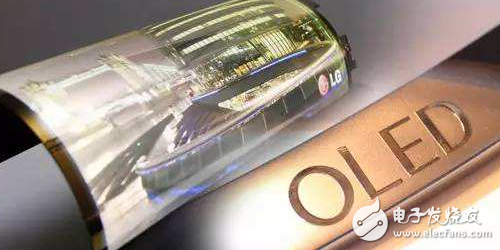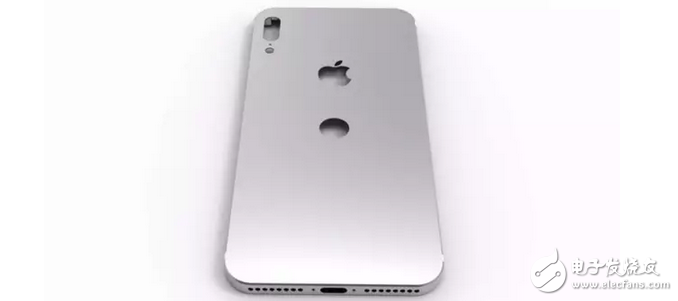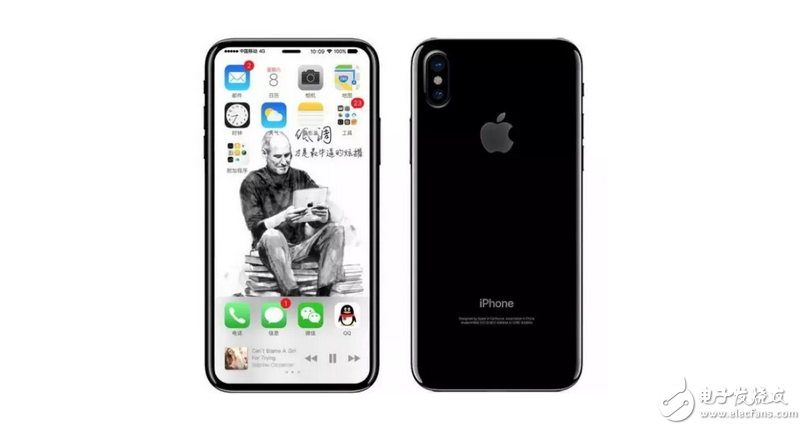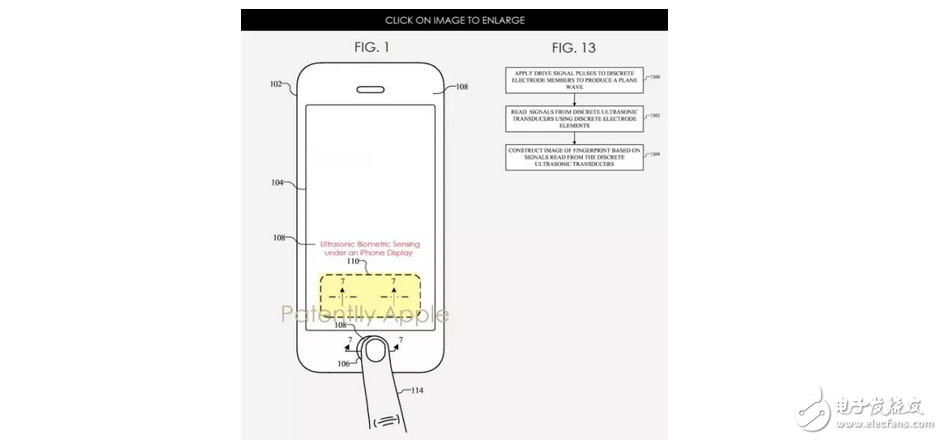In the OLED panel market, Samsung's market share accounts for up to 95%. Now foreign media pointed out that Samsung will start producing its 7th generation OLED panel in the second quarter of next year!
According to comprehensive reports, LG Display is rushing to increase production of six generations of OLEDs, including the expansion of its capacity to invest hundreds of millions of dollars in flexible small-sized panels.
Samsung has already felt pressure. In order to maintain its advantage, it is accelerating the development of the seventh-generation OLED production line, which will be put into production in the second quarter of 2018, at the A4 production line.

It is understood that other manufacturers are still based on the sixth-generation OLED screen. Every time the screen technology update will bring better display performance and greatly reduced power consumption, Samsung’s new generation of OLED screens can be used. The folding curved display is actually the most worthy of attention.
It is also pointed out that Samsung Display Technology will continue to conduct research in many aspects, including foldable OLED screens, chip-on-plasTIc OLED screens and ultra-resolution OLED displays with 800 ppi pixel density.
It was previously reported that Samsung will launch a foldable screen smartphone called Galaxy X this year, and it is still very mysterious until now. Samsung is very likely to conduct small-volume production at the end of this year to test the market reaction.
In addition, the chip-on-plasTIc OLED screen is also a new type of screen technology that replaces traditional glass substrates with plastic, making it easier to create a curved screen smartphone similar to the Galaxy S8 and Galaxy S8+.
As for the 800ppi ultra-high pixel density OLED panel, this product is not developed for TV or tablet products, but is designed for small devices such as smart phones. This is a 5.5-inch resolution but up to 3480&TImes; 2160-pixel Ultra HD 4K Ultra HD screen, and this is not the first time that there is news that Samsung will develop such a screen.
At present, 95% of OLED displays on the market are from Samsung. Even if Apple wants to use OLED display on iPhone 8, it depends on Samsung's supply. According to forecasts, by 2020, Samsung's domination of OLED panel supply will be difficult to shake.
Earlier, it was reported that Apple's iPhone 8 will adopt a new screen technology, but no one has discussed what this new screen technology is like. What changes Apple needs to make to the screen will allow Touch ID to stay. On the front of the iPhone, not on the back of the fuselage because it cannot be integrated into the borderless screen. The iPhone 8 is likely to use an OLED screen, not only to improve battery life, but also because of other related technologies.

Since the iPhone 5s integrated Touch ID, Apple's fingerprint sensing technology can be said to have been at the industry leading level. If you use OLED screen technology and want to keep the Touch ID on the front of the fuselage, Apple needs to make changes to the Touch ID technology. So how should Apple change?
The Touch ID sensor actually consists of three main components: a laser-cut sapphire wafer, a stainless steel ring, and a capacitive sensor. It doesn't seem to be a good idea to look at these components. In fact, each part has its own unique features.
The sapphire wafer not only protects the fragile sensor beneath it, but also acts as a lens to help the sensor focus on the user's fingerprint. If the material hardness of the glass piece is not high enough, it is easy to cause scratches, and the fingerprint image obtained by the sensor will be paralyzed and will not work properly.
The stainless steel ring that surrounds the Home button also plays an important role in the entire Touch ID system. When you put your finger on the Home button, the stainless steel ring detects it immediately and wakes up the sleeping sensor, so the sensor doesn't have to stay open all the time. This greatly reduces power consumption while extending the life of the sensor. Not only that, the stainless steel ring can even shield the external electromagnetic interference when the sensor reads the fingerprint to improve the recognition rate.
Once activated, the sensor will capture your fingerprints with an accuracy of up to 500 ppi. This advanced sensor does not read fingerprints from the easily damaged skin, but reads the conductive layer under the finger skin, further improving the accuracy of recognition and the difficulty of forging fingerprints.
From iPhone 5s to iPhone 7, Apple mainly updates Touch ID twice, and from iPhone 6 to iPhone 7 update, Apple mainly improves the sensing speed.
We all know that the industry has always been to achieve the iPhone 8 to achieve large screen ratio, and the most ideal way to achieve large screen ratio is to cancel the traditional Home button, using the screen recognition.

However, as we all know, the screen fingerprint technology is not mature now, so the iPhone 8 has to realize the full-screen dream, it may have to be "hands-on" in other aspects, and the rear may be a choice.
Where is the problem?
The problem is still the difference in distance between the sapphire wafer and the sensor. The sensor itself is 170 microns thick, while the sapphire wafer is not as thick.
Although the thickness of the OLED screen assembly is thinner than that of the LCD screen assembly, the thickness of the cover glass used by both screens is similar. Although the screen glass is only 1mm thick, it is 5 times thicker than the iPhone 7 Touch ID sensor sapphire wafer.
When the user places a finger to verify that the interval between the fingerprint surface and the capacitive sensing array increases, the fingerprint electric field captured by the Touch ID sensor is correspondingly blurred. In the current Touch ID, the lens is already very thin, minimizing the possibility of distortion and distortion.
After the sensor is placed on a thick lens, such as the iPhone 8 directly behind the screen glass, this blur without any form of correction will cause the fingerprint image pixels to be affected, reducing the accuracy of recognition.
Although it is possible to calculate how much the thickness of the glass affects the degree of image distortion, this algorithm is very complicated. In addition to the data currently available for Touch ID sapphire wafers, more data is needed to accurately calculate how much thickness variation will have. But probably speaking, compared to the current image distortion severity, if you put the Touch ID on the screen glass, this distortion may increase by 5-15 times.
You may think that Apple can compensate for the distortion caused by the distortion by storing the fingerprints, but this method will reduce the security of the Touch ID. Banks may be dissatisfied with this and Apple Pay may also be affected.
However, Apple has previously obtained a patent for touch sensor arrays using electrostatic lenses. The patent is entitled "Electrostatic Lens Capacitive Fingerprint Sensor" and, according to the patent description, the sensor comprises: a dielectric structure having a contact surface and a sensor surface, an array of capacitive sensing elements and an electrostatic lens formed within the dielectric structure. This patent can effectively solve the problem that the image is distorted after the sensor is embedded in the glass.

Apple needs to upgrade and utilize this patent and ensure its production, so it is possible to put the Touch ID on the bottom of the screen.
No one dares to say that this problem is easy to solve
Apple previously said that the probability of a fingerprint matching a fingerprint stored in a Secure Enclave is 1:50,000. Whenever possible, Apple needs to ensure that Touch ID has such a higher level of security.
Recently, it is reported that the shipment of iPhone 8 may be affected by Touch ID. There is even news that the fingerprint sensor of Samsung Galaxy S8 is behind the fuselage, so Apple may re-select the location of Touch ID. It is placed on the back of the fuselage. But these guesses may not be correct.
In the iPhone 7 series, we saw that Apple is ready to put both the Touch ID and the virtual home button under the screen glass. Touch ID is an important technology for Apple services, Apple Pay needs its support, and the data that users save on the device also needs its protection.
From Apple's point of view, if they feel that the products they develop cannot meet the user's needs to the fullest extent, and the security functions are not guaranteed, they should not release such New Products with "half buckets of water". The Touch ID used in the iPhone 8 this year will not deviate from this principle unless Apple does not want to sell the iPhone in 2017.
Solar home energy storage power supply
SHENZHEN CHONDEKUAI TECHNOLOGY CO.LTD , https://www.szsiheyi.com